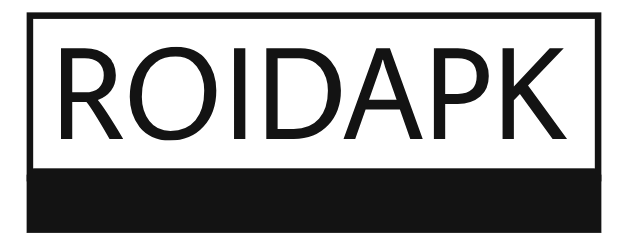Vintage jewellery carries charm, history, and, often, significant value. Whether you own a family heirloom or have stumbled upon a unique piece, knowing the value of your jewellery is essential. But how is vintage jewellery valued, and what should you look for in an appraisal? This guide will take you through everything you need to know to uncover the worth of your treasure.
Why Vintage Jewellery Valuation Matters
Why bother with a valuation? The value of vintage jewellery goes far beyond monetary worth. It could hold sentimental value, historical significance, or a crucial investment. A proper valuation ensures you’re adequately informed, whether for insurance purposes, reselling, or simply understanding the story behind a treasured piece.
Example Scenarios Where Valuation is Essential:
- Insurance Coverage: Without an accurate valuation, your insurance may not fully cover the loss or damage to your jewellery.
- Fair Resale Pricing: If you’re selling, a valuation helps set a competitive and fair price without underselling a one-of-a-kind piece.
- Estate Planning or Legal Disputes: Vintage jewellery valuation often features in wills or estates, making valuation pivotal for equitable distribution.
What Affects the Value of Vintage Jewellery?
Several factors influence the value of your vintage jewellery. Here’s a breakdown of the most crucial elements to consider.
- Materials and Craftsmanship
The type of metal and gemstone used plays a massive role. Platinum, gold, or silver pieces often hold intrinsic value due to their raw materials. Gems like diamonds, sapphires, or emeralds bring additional worth. Beyond the materials, the craftsmanship speaks volumes—well-made, intricate designs are generally more valuable. - Age and Era
Does your piece belong to the Victorian, Edwardian, Art Deco, or Retro era? Each period has its unique style and appeal. Collectors often value pieces from specific eras, especially if they represent the hallmarks of that time. - Condition
Signs of wear, missing stones, or repairs can significantly impact value. Well-preserved pieces will naturally fetch higher prices. - Designer or Maker
Certain jewellers, like Cartier, Tiffany & Co., or Van Cleef & Arpels, can demand a premium because of their reputation and craftsmanship. Look for maker’s marks or hallmarks as verification. - Rarity
Is your piece a one-off design or part of a limited collection? Rare jewellery is always in demand.
How is Vintage Jewellery Valued?
The valuation process involves meticulous inspection, expertise, and market comparison. Here’s what professionals usually do.
Step 1: Initial Inspection
A valuer will begin by physically inspecting the item. They’ll examine its weight, measurements, construction methods, hallmarks, and any signs of authenticity.
Step 2: Assessing Materials and Stones
Specialized tools can determine the type and quality of metals and stones. They’ll also check for enhancements or artificial treatments.
Step 3: Understanding Provenance
Suppose you have documentation, such as receipts, certificates, or photographs. In that case, this helps establish the piece’s history and authenticity, boosting its value.
Step 4: Market Research
Valuers compare your piece to historical sales of similar items to determine market demand.
Step 5: Final Report
You’ll receive a detailed written report that includes the piece’s description, estimated value, and any other key findings.
Tips for Getting an Accurate Valuation
Want to ensure the most precise appraisal? Follow these tips to make the process smooth and reliable.
- Choose a Reputable Appraiser
Opt for an independent and certified professional. Look for accreditations with bodies like the Gemological Institute of America (GIA) or the National Association of Jewellers (NAJ). - Bring Documentation
If you have any paperwork related to the piece, such as original purchase receipts or previous appraisals, bring them along. - Clean Your Jewellery
Make the jewellery shine beforehand. Dust, dirt, or tarnish can make it harder to evaluate. - Ask Questions
Feel free to ask how the appraisal value was calculated. Understanding their process ensures transparency and builds trust.
Common Misconceptions About Vintage Jewellery Valuation
Valuing vintage jewellery is often wrapped in myths. Here are some misconceptions to avoid.
- “Older Means Pricier.”
Age does not always equate to value. Some modern pieces can surpass older items depending on quality and demand. - “I Can Value It Myself.”
Without expertise, it’s easy to overestimate—or underestimate—a piece’s worth. Professionals have tools and experience that make a difference. - “Breakage Destroys Value Entirely.”
Damaged jewellery can still hold significant value, especially if it’s rare or has historical importance.
The Allure of Vintage Jewellery Through History
Before valuing, it’s worth appreciating the rich history vintage jewellery carries.
From intricate Georgian designs to the boldness of Art Deco, each era brought innovative techniques and distinctive styles. Victorian jewellery showcased sentimental motifs, while the Edwardian period embodied elegance with lacy platinum designs. This historical context often enhances a piece’s significance and desirability.
Frequently Asked Questions About Vintage Jewellery Valuation
Q1. How often should I get my vintage jewellery valued?
Every 3–5 years is ideal, as market trends and material values can change.
Q2. Can I wear my jewellery after valuation for insurance purposes?
Yes, but ensure it’s adequately insured against wear and tear or loss in case of damage.
Q3. Why does sentimental value differ from market value?
Sentimental value is personal and subjective, while market value reflects objective factors like materials, demand, and historical significance.
Q4. Can costume or synthetic jewellery have value?
Absolutely! Designer costume jewellery or rare, high-quality pieces can hold significant worth.
Q5. How can I tell if my piece is vintage?
Look for hallmarks, stylistic elements from specific eras, and wear indicative of age. Consulting a professional is the surefire way to confirm.
Final Thoughts
Having your vintage jewellery valued is more than just putting a price tag on it. It’s about uncovering the history, craftsmanship, and sentimental worth behind every piece. Whether for insurance, resale or simply your curiosity, an accurate valuation celebrates timeless elegance and artistry.
Unlock the true value of your vintage jewellery and cherish its unique story.

